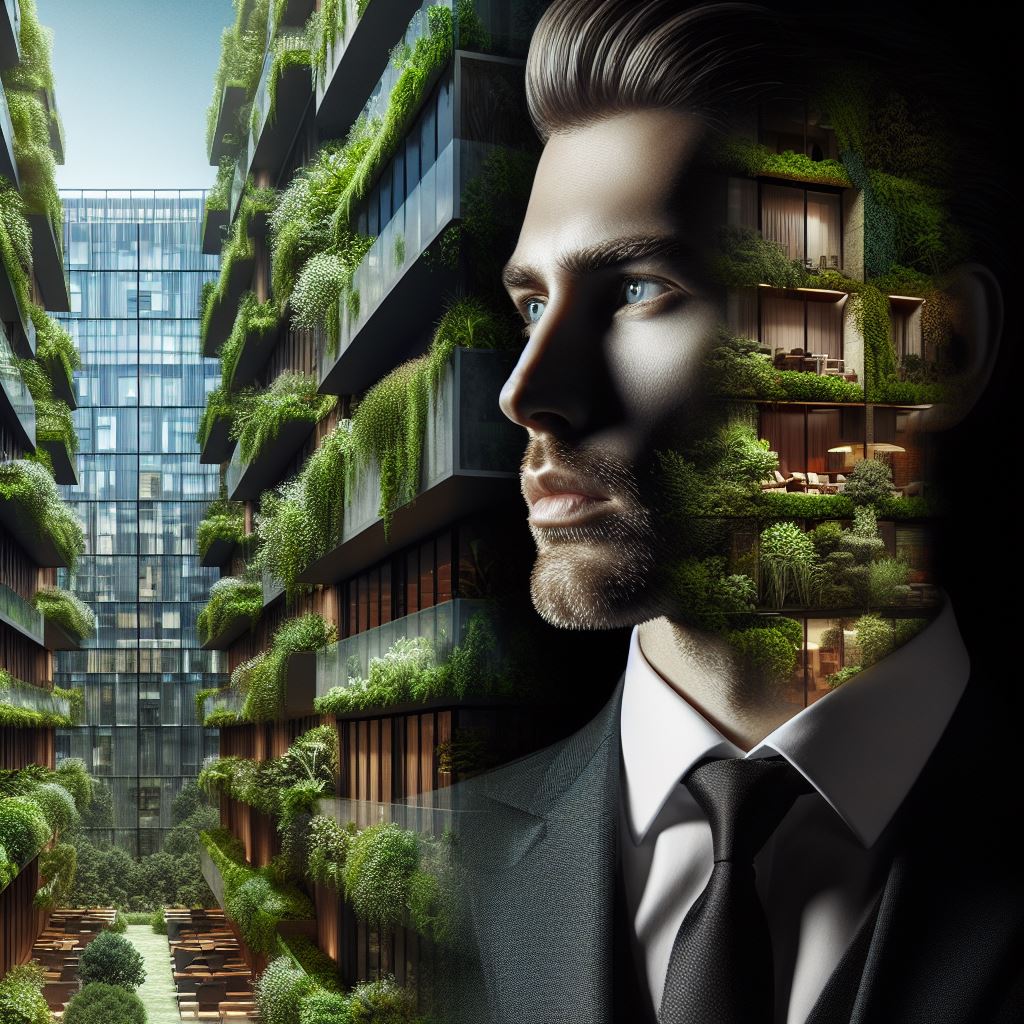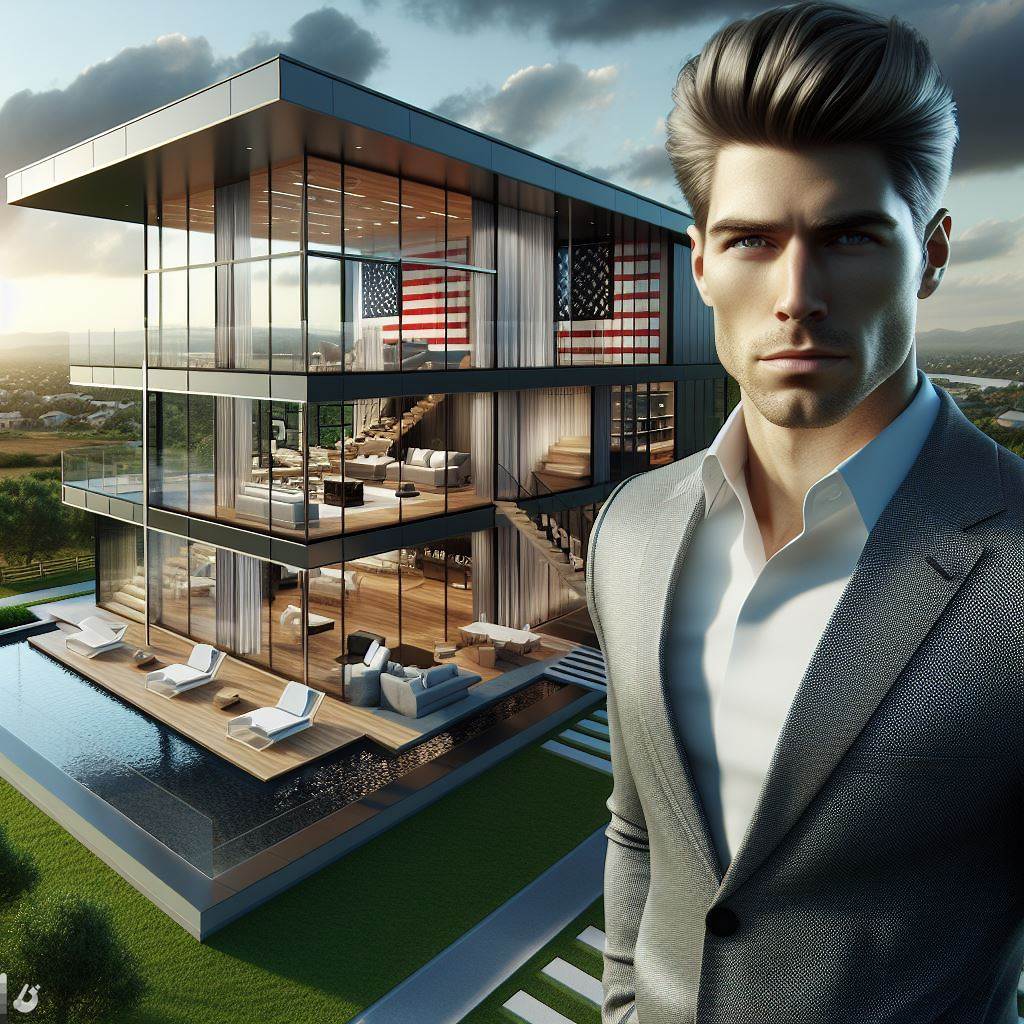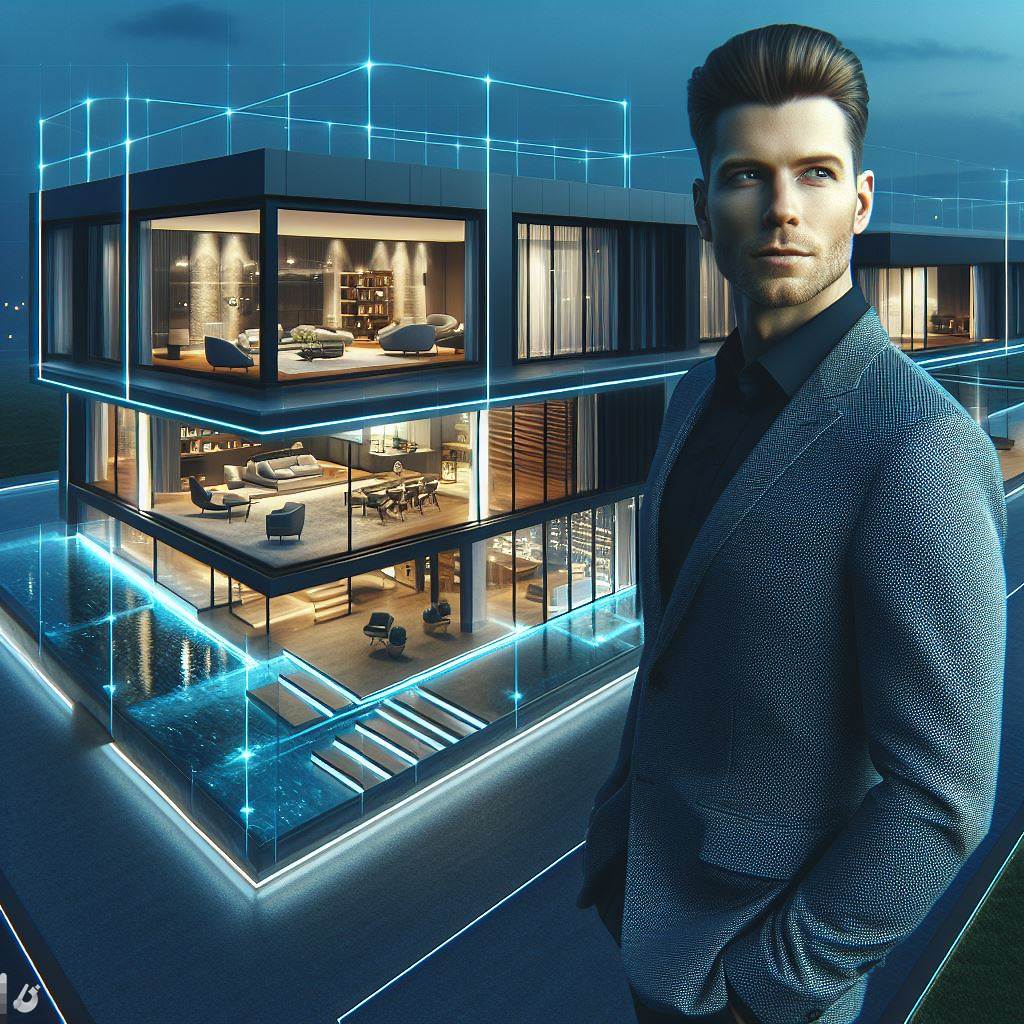Introduction
Delving into the realm of opulence, luxury living unveils a lifestyle that transcends conventional boundaries, epitomizing sophistication and cutting-edge concepts that redefine the very essence of extravagance.
It is not merely about material possessions but an immersive experience that seamlessly integrates modernity and nature.
At the heart of this transformative luxury living is the concept of vertical gardens—living masterpieces that grace the walls of contemporary abodes.
These green sanctuaries not only introduce a refreshing touch of nature but also serve as architectural marvels, merging functionality with aesthetic allure.
Vertical gardens, in essence, reimagine traditional landscaping by elevating it to new heights—literally.
In recent years, the allure of vertical gardens has skyrocketed within the realm of luxury living.
Discerning individuals, seeking not just status symbols but sustainable and visually stunning solutions for their urban spaces, have propelled these verdant installations into the limelight.
The surge in popularity reflects a growing appreciation for eco-friendly, aesthetically pleasing designs that harmonize with the urban environment.
Vertical gardens are no longer a mere trend; they have become an indispensable element in the portfolio of modern luxury living, a symbol of the harmonious coexistence of nature and contemporary lifestyle.
Benefits of Vertical Gardens in Luxury Living
Vertical gardens, also known as green walls or living walls, are revolutionizing luxury living by transforming the way we perceive and experience urban environments.
These stunning vertical displays of flora offer numerous benefits that go beyond just adding a touch of nature to our cityscapes.
In this section, we will explore the advantages of incorporating vertical gardens into luxury living.
Enhancement of aesthetics
The first major benefit of vertical gardens is the enhancement of aesthetics.
By introducing lush greenery and natural beauty to concrete jungles, these vibrant displays create a refreshing and visually pleasing environment.
The introduction of vegetation into urban settings brings about a sense of tranquility and relaxation, providing a much-needed escape from the hustle and bustle of city life.
The integration of vertical gardens into luxury living spaces not only adds a touch of natural beauty but also offers tangible benefits.
These green walls contribute to the overall aesthetics of urban environments, making them more visually appealing and enjoyable to reside in.
The calming effect of organic elements helps create a sense of tranquility and relaxation, allowing residents to unwind and rejuvenate in their own private oasis within the city.
Improved air quality and pollution reduction
Another significant advantage of vertical gardens is the improvement in air quality and reduction of pollution.
Plants naturally absorb carbon dioxide and release oxygen through photosynthesis, resulting in cleaner and fresher air.
Additionally, vertical gardens act as filters, trapping pollutants and chemicals present in the air and purifying it, thereby improving overall air quality.
Moreover, the reduction of pollutants and enhancement of air purification brought about by vertical gardens contribute to improved air quality, resulting in a healthier living space.
Breathing in cleaner air can have a positive impact on residents’ overall well-being, reducing the risk of respiratory issues and allergies.
Energy efficiency and insulation
In terms of energy efficiency, vertical gardens have a positive impact as well.
The lush foliage acts as a natural barrier, reducing the temperature in their surroundings.
This cooling effect helps decrease the need for air conditioning and lowers energy usage, leading to substantial cost savings for luxury residents.
Furthermore, the dense vegetation of vertical gardens provides insulation, acting as a barrier against heat and cold, thus improving climate control within buildings.
Additionally, the energy-saving properties of vertical gardens make them particularly beneficial for luxury living spaces.
By reducing the need for excessive cooling systems and lowering energy usage, vertical gardens promote a sustainable and environmentally friendly way of living.
This not only benefits the residents themselves but also contributes to the larger goal of creating greener and more sustainable cities.
In fact, vertical gardens offer various advantages that make them a valuable addition to luxury living.
From enhancing aesthetics and providing a sense of tranquility to improving air quality and promoting energy efficiency, these green walls create a harmonious and sustainable living environment.
As the popularity of vertical gardens continues to rise, it is clear that they have the potential to redefine luxury living in the modern era.
Read: Opulent Overwater Bungalows Around the World
Vertical Gardens as a Status Symbol
Association with luxury and prestige
Vertical gardens have become synonymous with luxury and prestige in the world of architecture and design.
They are often found in high-end residential and commercial buildings, projecting an aura of elegance.
The presence of a vertical garden in a property instantly elevates its perceived value and exclusivity.
Those who can afford these green installations display their wealth and discerning taste for finer things.
Vertical gardens also provide a sense of exclusivity, as not everyone can afford to have one.
They are a status symbol that sets the owner apart from the average homeowner.
Symbolizing closeness to nature and sustainability
Vertical gardens symbolize the desire to be closer to nature, even in urban environments.
They bring the beauty and serenity of nature right to the doorstep of luxurious residences and offices.
In a world where environmental consciousness is growing, vertical gardens represent sustainability.
They showcase a commitment to preserving and incorporating natural elements into modern living spaces.
This symbolism appeals to individuals who value eco-friendly living and want to make a difference.
Vertical gardens serve as a constant reminder of our connection to the natural world and the importance of sustainability.
Unique and eye-catching design feature
Vertical gardens are not only a symbol of luxury but also a unique and eye-catching design feature.
They add a touch of sophistication and allure to any space, creating a memorable visual impact.
The intricate patterns and textures created by a well-designed vertical garden captivate the eye.
These gardens become a centerpiece, transforming ordinary walls into stunning works of art.
The vibrant colors and lush foliage make vertical gardens a focal point that commands attention.
Visitors and occupants alike are drawn to these captivating installations, sparking conversations and admiration.
In short, vertical gardens have emerged as more than just a green infrastructure solution.
They have become status symbols, associated with luxury, prestige, and a commitment to nature and sustainability.
These stunning installations not only elevate the perceived value of properties but also create unique and awe-inspiring design features.
With their intricate patterns and vibrant colors, vertical gardens capture the attention and admiration of all who encounter them.
As society becomes increasingly focused on environmental consciousness, these gardens serve as visual reminders of the importance of sustainability and our connection to the natural world.
Read: Smart Gardens: Tech in Elite Outdoor Spaces
Implementing Vertical Gardens in Luxury Living Spaces
Selection of suitable plant species
- Research and identify plant species that can thrive in vertical garden conditions.
- Consider factors like light requirements, water needs, and ability to adapt to vertical growth.
- Choose plants with lush foliage and vibrant colors to create an aesthetically pleasing living wall.
- Consult with plant specialists or landscape designers to ensure the right selection of plant species.
Integration of irrigation systems and technology
- Install a reliable irrigation system to supply water to the vertical garden.
- Use technologies like drip irrigation or automated watering systems to ensure efficient water distribution.
- Consider water conservation methods, such as rainwater harvesting or greywater recycling.
- Integrate sensors and smart controllers to monitor moisture levels and adjust watering accordingly.
Structural considerations and engineering expertise
- Assess the structural integrity of the building or space where the vertical garden will be implemented.
- Seek engineering expertise to ensure the structure can support the weight of the garden.
- Determine the appropriate materials and techniques for constructing the vertical garden framework.
- Consider factors like wind loads, seismic activity, and waterproofing to ensure long-term stability.
Maintenance and care of vertical gardens
- Develop a maintenance plan that includes regular pruning, fertilization, and pest control.
- Provide proper training and guidance to maintenance staff or hire professional gardeners.
- Monitor plant health and address any issues promptly to prevent damage or deterioration.
- Regularly inspect irrigation systems, drainage, and structural components to ensure optimal functioning.
Implementing vertical gardens in luxury living spaces requires careful consideration of plant species, irrigation systems, structural integrity, and maintenance practices.
By selecting suitable plant species with expert guidance, the vertical garden can thrive and create an inviting living environment.
Integration of efficient irrigation systems and technology ensures the plants receive adequate water while minimizing waste.
Structural considerations and engineering expertise ensure the stability and longevity of the garden.
Regular maintenance and care are essential to keep the vertical garden in good health and maintain its aesthetic appeal.
With proper implementation, vertical gardens can enhance luxury living spaces and provide a harmonious connection with nature.
Read: Smart Homes: The Peak of Luxurious Living

Examples of Luxury Living Spaces with Vertical Gardens
Vertical gardens have become increasingly popular in luxury living spaces.
These stunning green features can be found in a variety of settings, from residential buildings and penthouses to commercial buildings and hotels, as well as public spaces and luxury shopping centers.
The rise of vertical gardens in luxury living spaces has added a new level of sophistication and beauty to modern architecture.
Let’s explore each category in more detail.
Residential buildings and penthouses
Residential buildings and penthouses offer the perfect canvas for vertical gardens, allowing residents to enjoy the benefits of nature right at their doorstep.
Skyscrapers have taken the concept of balcony gardening to the next level with luscious vertical gardens.
These green sanctuaries can be found on high-rise apartment buildings, allowing residents to escape the hustle and bustle of city life while still being surrounded by nature.
Rooftop gardens have also become a sought-after feature in luxury apartment complexes.
These elevated green spaces provide residents with a private retreat, offering stunning views and a sense of tranquility.
Commercial buildings and hotels
Vertical gardens have made their way into commercial buildings, transforming sterile atriums into vibrant and inviting spaces.
Atriums filled with vertical green walls have become a common sight in modern office complexes.
These living walls not only provide aesthetic appeal but also enhance indoor air quality and create a healthier work environment for employees.
Luxury hotels have recognized the allure of vertical gardens and have incorporated them into their designs.
From stunning exterior facades covered in cascading greenery to indoor gardens that create a sense of serenity, these hotels offer a truly immersive and luxurious experience.
Public spaces and luxury shopping centers
Public spaces and shopping centers are taking advantage of the beauty and functionality of vertical gardens.
Urban parks are embracing vertical gardens as a way to add a touch of nature to urban landscapes.
These gardens not only enhance the visual appeal of parks but also create a healthier environment by reducing noise and air pollution.
Luxury shopping centers have joined the trend by incorporating vertical gardens into their designs.
These green features provide shoppers with a unique and visually stunning experience, blurring the lines between indoor and outdoor spaces.
In general, vertical gardens have become an integral part of luxury living spaces.
Whether in residential buildings, commercial spaces, or public areas, these green installations add a touch of beauty, tranquility, and sustainability to our modern world.
Read: Artistic Flair in High-End Home Architecture
Future Trends and Innovations in Vertical Gardens for Luxury Living
Advancements in vertical garden technology
Advancements in vertical garden technology are continuously pushing the boundaries of what is possible.
New irrigation systems are being developed to ensure efficient water usage in vertical gardens.
Automated fertilization systems are being designed to provide plants with the nutrients they need.
Plant selection and breeding techniques are being improved to create more resilient and visually appealing plants.
Lighting systems are being optimized to provide the right spectrum and intensity for optimal plant growth.
Integration of smart system controls and sensors
Smart system controls and sensors allow for real-time monitoring and adjustment of environmental conditions.
Temperature, humidity, and lighting can be automatically adjusted to create the ideal growing conditions.
Moisture sensors can detect when plants need watering and ensure they receive the right amount of moisture.
With the integration of artificial intelligence, vertical gardens can self-adjust based on the needs of the plants.
These advancements in controls and sensors make it easier than ever to maintain a healthy and beautiful vertical garden.
Sustainable practices and eco-friendly materials
The future of vertical gardens lies in sustainable practices and the use of eco-friendly materials.
Recycled and biodegradable materials are being used in the construction of vertical garden structures.
Efforts are being made to minimize the use of water and energy in maintaining vertical gardens.
Organic fertilizers and pest control methods are being embraced to reduce the environmental impact.
Vertical gardens are also being designed to attract and support local wildlife, contributing to ecosystem biodiversity.
Transformation of entire buildings into vertical gardens
As the popularity of vertical gardens continues to rise, entire buildings are being transformed into green oases.
Buildings covered in lush plants not only provide aesthetic appeal but also improve air quality.
These living walls can act as natural insulation, reducing the energy consumption of the building.
They also contribute to noise reduction, creating a peaceful oasis in the midst of urban environments.
Transforming buildings into vertical gardens showcases the potential for harmonious coexistence between nature and architecture.
Vertical gardens are not just a passing trend; they are an innovative solution for luxury living.
The future of vertical gardens holds exciting advancements in technology, controls, sustainability, and architectural integration.
By embracing these trends, individuals can create stunning and eco-friendly spaces that enhance their quality of life.
Conclusion
In recent years, the popularity of vertical gardens in luxury living has skyrocketed.
These innovative architectural features have transformed urban spaces and brought nature closer to residents.
Vertical gardens not only offer aesthetic appeal but also provide numerous benefits.
They improve air quality, reduce noise pollution, and enhance overall wellbeing.
Moreover, they have become a status symbol among affluent individuals, symbolizing a taste for luxury and eco-friendly living.
The incorporation of these gardens has become a key element in modern architectural designs.
The growing popularity of vertical gardens in luxury living shows no signs of slowing down.
As sustainability continues to be a top priority, we can expect to see even more innovative designs and advancements in vertical gardening methods.
Future trends may include the integration of technology and automation in maintaining and monitoring these gardens.
Exciting innovations such as hydroponic systems and energy-efficient lighting solutions are also on the horizon.
Vertical gardens have revolutionized the luxury living landscape.
They offer a harmonious blend of nature and architecture, providing myriad benefits to residents and the environment.
As the demand for sustainable living increases, we can look forward to witnessing remarkable trends and innovations in this field.




